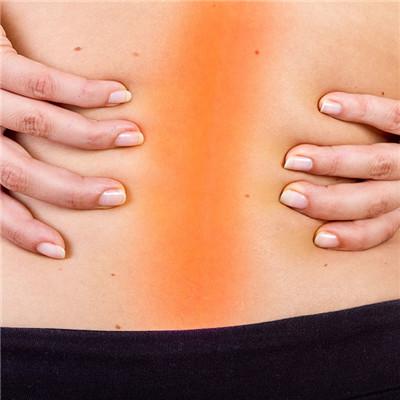What kind of people need health management most
summary
People pay more and more attention to health care, also know the importance of health. From the perspective of health care, each person's physical condition is different, suitable for the use of scientific regimen is also different. Who needs health management most? Let's take a look at the following.
What kind of people need health management most
First: chronic diseases and emotions at present, chronic diseases have become the number one health threat to Chinese people. The proportion of urban and rural residents who died of chronic diseases accounted for 85.3% and 79.5% respectively, and still showed a blowout growth. The elderly are the main force suffering from chronic diseases. Therefore, the core of their health management is to manage chronic diseases and improve the quality of life. At present, the management of chronic diseases at the national level in China is constantly strengthened, such as the creation of national chronic disease demonstration areas and the management of chronic patients through community hospitals. The elderly themselves should prevent or control chronic diseases by changing their bad lifestyle and behavior habits. Medical research has confirmed that many chronic diseases can be prevented and cured. As long as we adhere to a healthy lifestyle such as reasonable diet, moderate exercise, smoking cessation and alcohol restriction, the risk of hypertension can be reduced by 55%, stroke reduced by 75%, diabetes reduced by 50%, and the average life expectancy can be extended by at least 10 years. The elderly with chronic diseases should take medicine correctly under the guidance of doctors, and should not stop or reduce drugs by themselves; do a good job in monitoring blood pressure, blood sugar, waist circumference, weight and other indicators; limit salt, oil and sugar, and avoid high-fat diet; maintain the law of life, exercise appropriately every day, fast walking, jogging and Tai Chi are good choices.

Second: pressure and work and rest. Young and middle-aged white-collar workers in the workplace are the dual pillars of society and family, and their health problems are increasingly prominent. According to a survey conducted by life times, in terms of body, the biggest troubles of employees come from "fatigue" and "insomnia", and cervical spondylosis, gastrointestinal disease and fatty liver have become the three major diseases threatening health; in terms of psychology, 78.9% of employees have experienced "irritability", 59.4% have experienced "anxiety", and 38.6% feel "depression". The main factors affecting the health of young and middle-aged white-collar workers are: irregular meals, high work pressure, often sedentary. In many diseases, the function of organs will decline before the occurrence of qualitative lesions, and the lesions will occur only when the decline reaches a critical point. Therefore, for young and middle-aged white-collar workers, the focus of health management is regular physical examination, establish a healthy lifestyle and persevere, reduce the risk of disease, improve the overall health status. It is also a "skill" for young and middle-aged white-collar workers to learn to insist on reasonable diet, be diligent in sports, reasonably arrange working hours and timely relieve pressure. Long term tension, anxiety in the negative emotions, will lead to psychological disorders, may also appear cardiovascular and cerebrovascular diseases, endocrine disorders and immune decline, leading to disease. Therefore, the emergence of negative emotions or psychological disorders, to ease in time, serious should seek medical advice.

Third: weight and vision should lay a good foundation for health in adolescence. But the reality is not optimistic. Obesity, fatty liver, type 2 diabetes, hypertension, dyslipidemia and other chronic diseases incidence rate among young people is increasing rapidly. In particular, obesity, the number one health threat, is leading the disease to teenagers step by step. In the face of the huge pressure of entering a higher school, teenagers have to face heavy schoolwork burden every day. Only a few PE classes a week are often "occupied" by examinations and make-up classes. In addition, high-fat, high sugar diet has created a number of "little fat dunks". Data show that the number of obese people under 18 years old in China has reached 120 million. Adolescent obesity may lead to adult obesity, but also lead to many psychological and behavioral problems and social maladjustment. The school, parents and children should work together for the health management of teenagers. The school arranges the extracurricular activities reasonably to guide the students to the nature. Almost all primary and secondary schools in Japan carry out hiking, mountain climbing and other activities. Myopia is also a major problem affecting the health of teenagers. Primary school students in primary school in China have about 200 million people. The incidence rate of poor eyesight is 40%, junior high school is 60%, and high school is 70% to 80%, which ranks first in the world. To protect eyesight, we should not only check eyesight frequently and wear glasses in time, but also reduce the burden of schoolwork. In Canadian schools, homework is not recommended. There is no homework in the lower grades. In the higher grades, homework is required to be done in class, and the time and intensity of using eyes are greatly reduced.

matters needing attention
Parents should encourage their children to exercise for at least one hour every day, and they can also accompany their children to exercise together, such as playing badminton, table tennis, basketball, etc. In terms of diet, parents should take good care of their children's mouth, master the principle of low sugar and low fat, stay away from carbonated drinks and junk food, and eat more coarse grains and fresh fruits and vegetables.

















